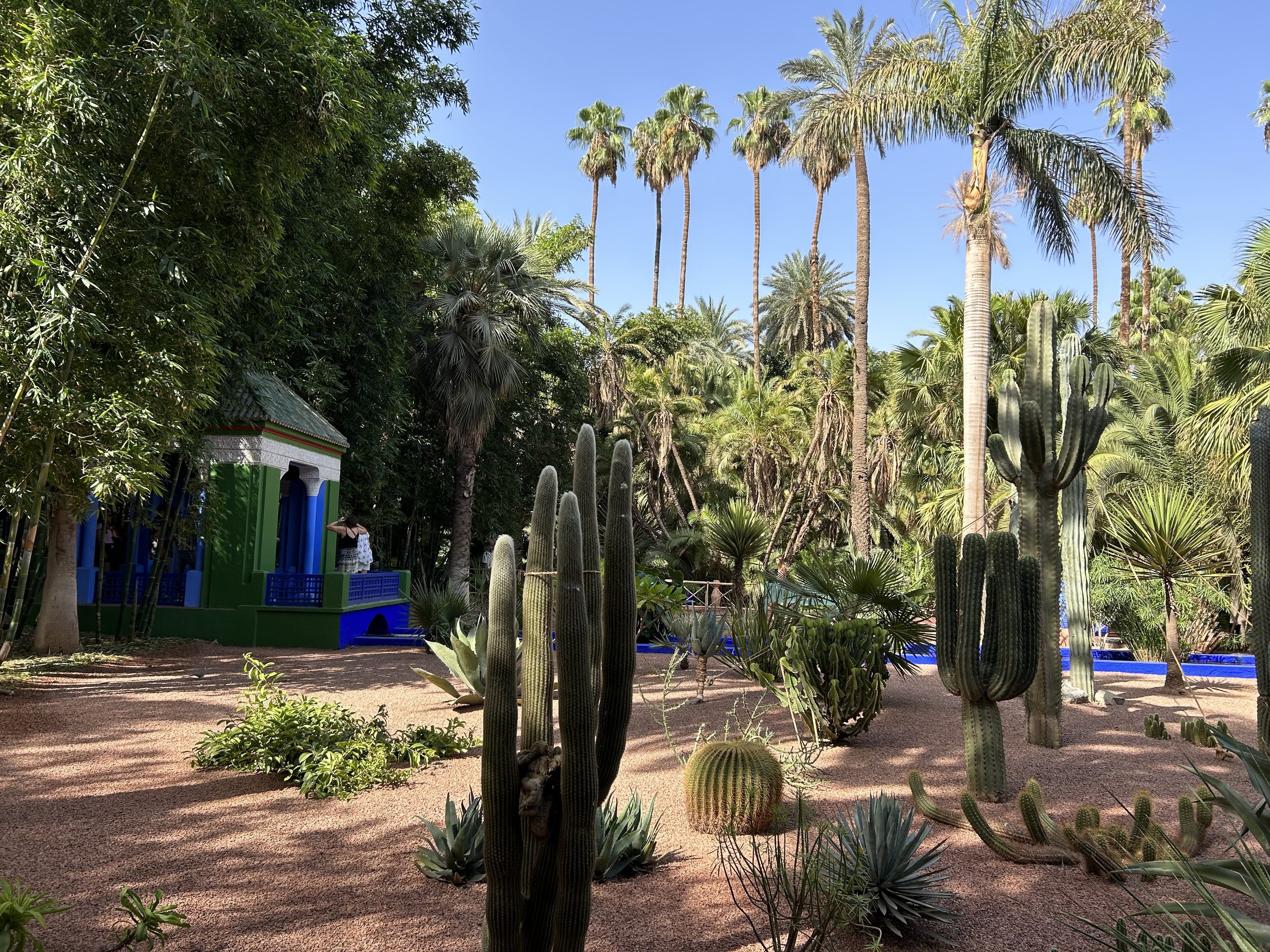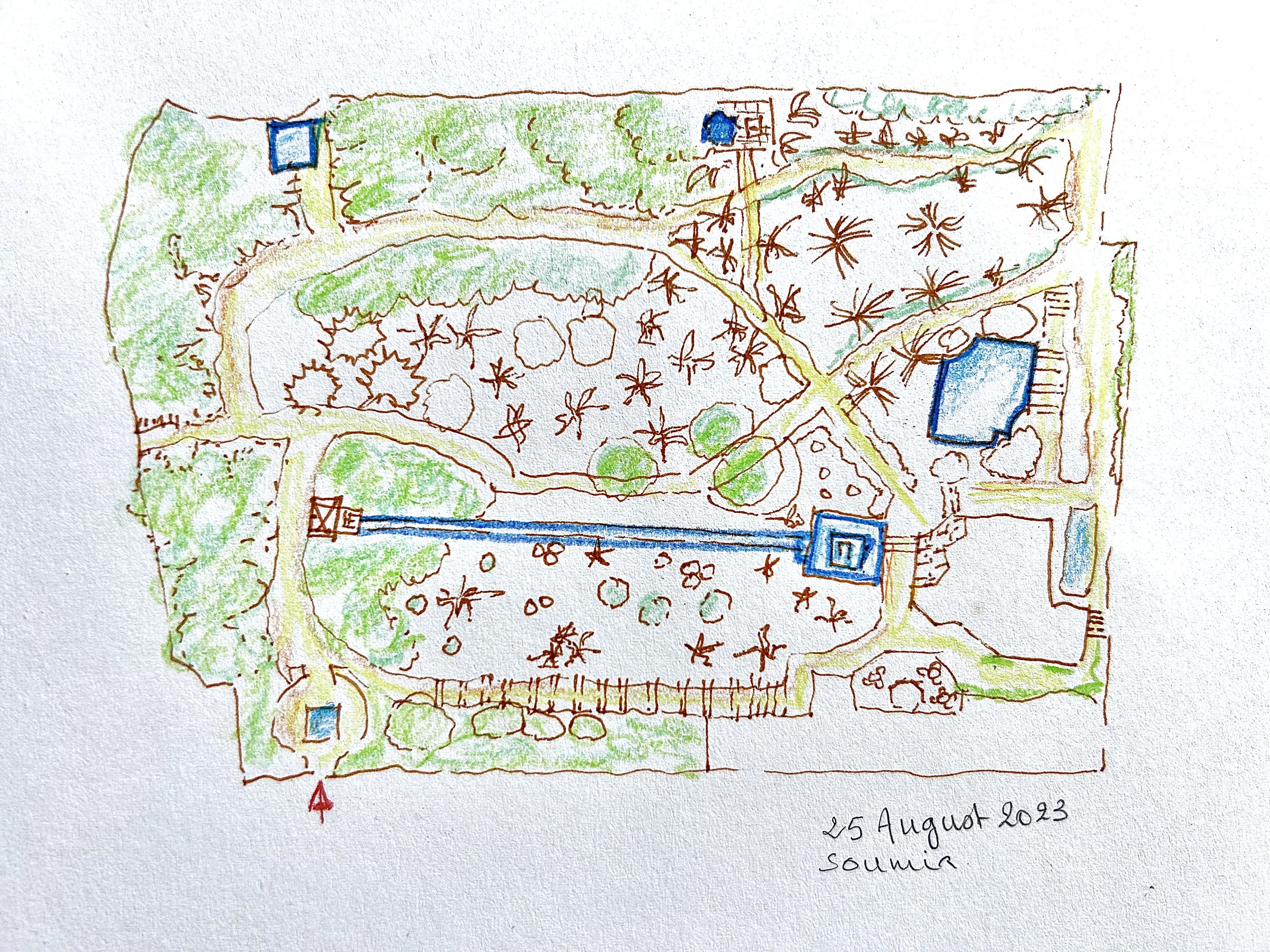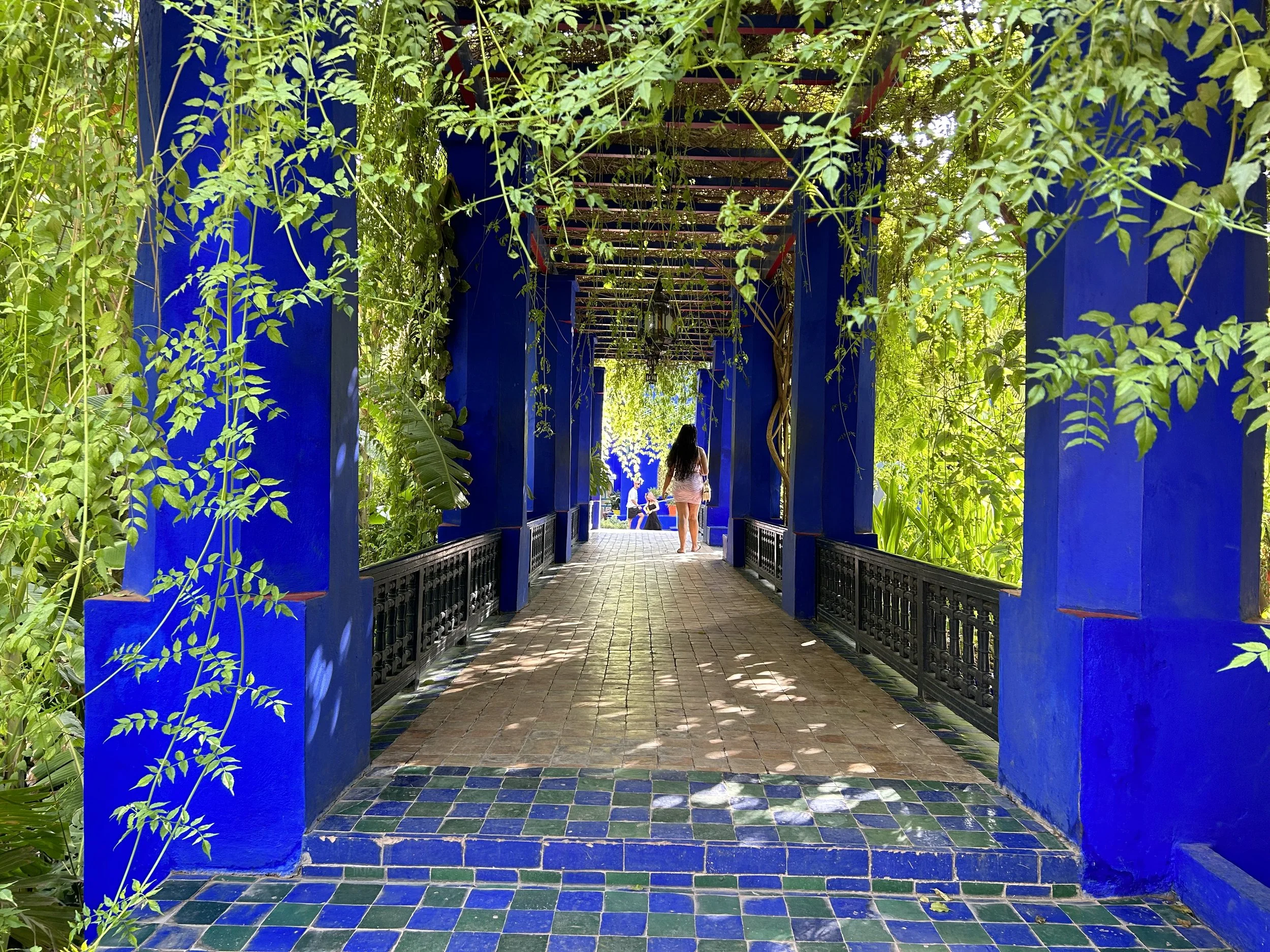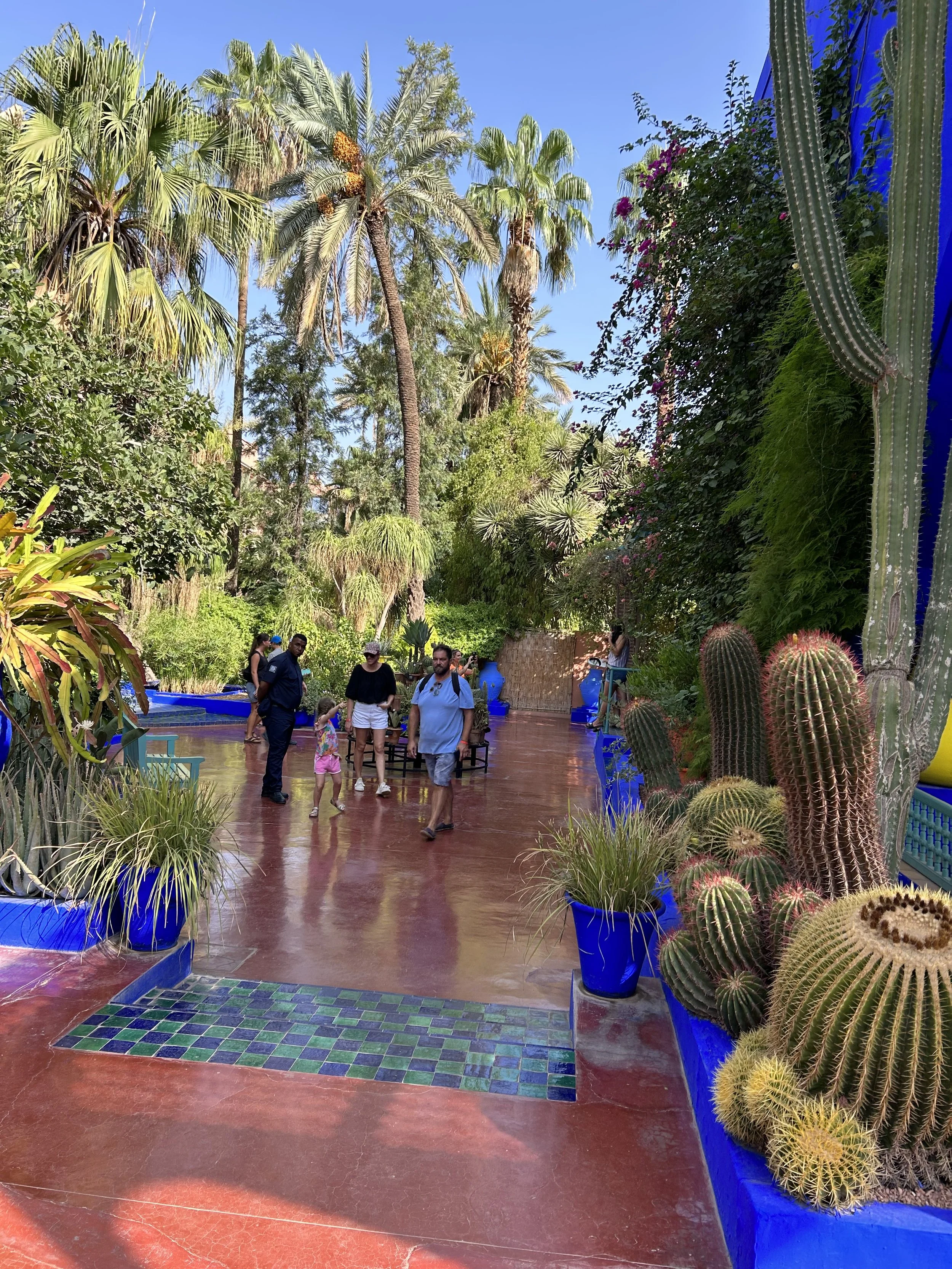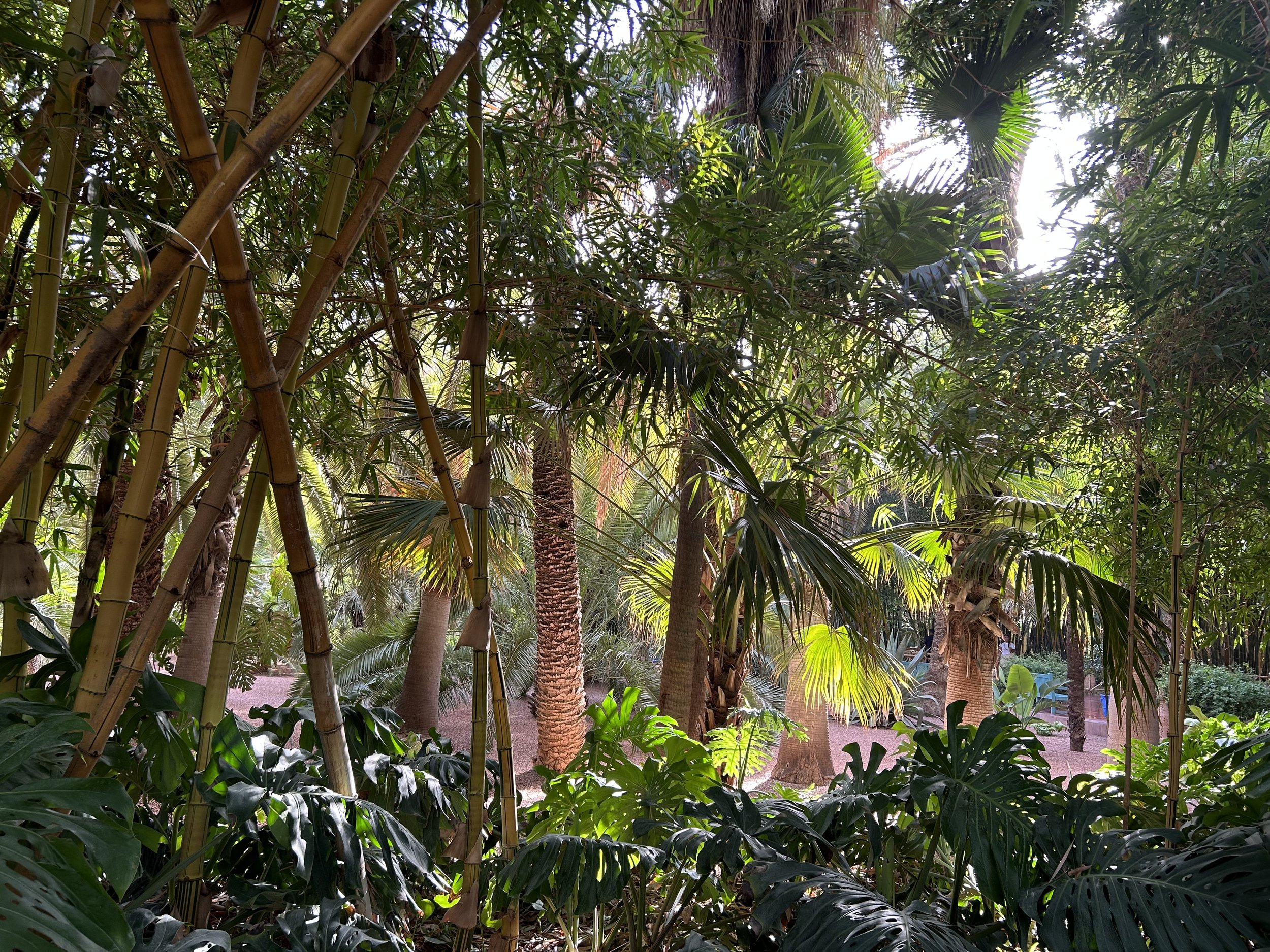The Majorelle Garden; One of Marrakech Urban Gem
Embark on a journey with me into the heart of Marrakech's urban oasis, where the Majorelle Garden stands as a testament to both history and design. Urban gardens, with their rich past and cultural nuances, always captivate my interest, and Majorelle is no exception. From its origins as a private sanctuary to its transformation into a cultural icon, this garden holds secrets waiting to be unveiled. Join me in delving into the intricacies of Majorelle's design, where every tree and theme tells a tale of careful curation and cultural significance.
History:
The Jardin Majorelle, a captivating botanical haven in Marrakech, Morocco, unfolds a tale steeped in art and nature. Conceived in 1931 by the French artist Jacques Majorelle, the garden, blending Islamic, Spanish, and Mauresque influences, was envisioned as an oasis within the vibrant Medina. The villa, an Art Deco masterpiece, served as Majorelle's residence and studio.
In 1980, the garden found new custodians in Yves Saint Laurent and Pierre Bergé, solidifying its legacy. Today, it stands as a testament to Majorelle's artistic vision and a convergence of French and Moroccan heritage.
Botanical Aspect and Context:
Spanning nearly one hectare, the Jardin Majorelle, located in Marrakech, Morocco, boasts a diverse collection of over 300 plant species intricately organized based on typology, conditions, and orientation. With its lush greenery and vibrant blooms, the garden provides a serene oasis amidst the bustling city. Visitors can wander through neatly manicured paths, discovering hidden corners and tranquil spots to relax and appreciate the natural beauty. The Jardin Majorelle's enchantment extends beyond its borders, as it is surrounded by other captivating attractions. Just a stone's throw away, the Yves Saint Laurent Museum showcases the fashion designer's legendary creations, paying homage to his timeless style. Additionally, the Museum of Berber Art offers an immersive experience, allowing visitors to delve into the rich cultural heritage of the indigenous Berber people. Together, these attractions create a harmonious blend of nature, art, and history, making a visit to the Jardin Majorelle an unforgettable experience.
Garden Landscape Design:
1.Colors and Textures:
The garden's design not only incorporates distinctive soil treatments to allow for mulch in certain areas while keeping others free of residue, but it also prioritizes the preservation of biodiversity by implementing a controlled visitor flow that minimizes disruptions. The deliberate use of materials such as waxed sticks, baked bricks, and narrow pathways (each measuring less than 2 meters wide) imbues the space with a sense of intimacy and domestic-scale dimension. Moreover, the landscape is punctuated by vibrant blue walls, reminiscent of the iconic villages like Chefchaouen, that truly elevate the urban environment, turning it into a hidden gem. In certain sections, bamboo fences with asiatique weaving patterns add an intriguing touch, albeit slightly disconnected from the overall context, yet without demanding too much attention.
2. Microclimate:
Incorporating carefully positioned basins into the garden with Andalusia inspiration style layout not only enhances its visual appeal but also adds a delightful sensory dimension. The artful arrangement of these basins invites visitors to embark on a captivating expedition through the garden's charmingly compact space. As sunlight and the foliage, casting playful interplays of light and shade, the journey becomes a magical experience, where every step leads to a new and enchanting discovery. Additionally, the basins serve as refreshing spots for birds to drink and refresh themselves amidst the tranquil surroundings. The presence of aquatic plants in the ponds also attracts an array of colorful fish, further enhancing the overall beauty and serenity of the garden.
3.Botanic and Biodiversity
The curated plant and tree collections enchant botanists and visitors alike:
Palm Collection: A Testament to Tradition
Nestled in the southern embrace of the garden lies a Palm Collection, resonating with the echoes of an ancient oasis from the city of Marrakech. Here, palm trees stand as more than botanical specimens; they are revered as sacred contributors to the economic and ecological tapestry of the region. The palms, with their timeless presence, serve as living monuments to the traditions that have shaped this land.
Cactus Collection: Connecting Continents
As you meander through the garden, the Cactus Collection draws you into an intriguing dance of shapes and sizes. From spherical to cylindrical, arboreal to epiphytic, these resilient plants evoke a connection with the vast landscapes of Latin America. Towering cacti, reaching heights taller than 2 meters, transport visitors to a realm where nature's sculptures defy the arid challenges of their origins.
Banana Collection: A Tropical Interlude
Amidst the stoic palms and resilient cacti, the Banana Collection introduces a tropical interlude. Originating from the Middle East to the Pacific, these plants paint a vivid picture with their large, expressive leaves. Though not towering like the palms, nor stout like the cacti, the banana plants bridge the size gap, creating a visual transition in the garden's narrative. Their presence offers a tropical touch, adding a layer of lush greenery to the arid beauty of their surroundings.
Rare Plants: An Alley of Marvels
Venturing deeper, the garden unveils a captivating alley adorned with Rare Plants. Categorized by their climate requirements—Deserticodes, Savante, Montagnard—these unique specimens showcase nature's capacity for adaptation. Each plant in this botanical treasure trove tells a story of resilience, thriving against the backdrop of varying climates, adding depth to the garden's biodiversity.
Bamboo: Nature's Symphony
Strategically positioned in the southern and western reaches, the Bamboo serves as both guardian and composer of the garden's pathways. Beyond its functional role in delineation, bamboo introduces a refreshing touch, welcoming visitors with its graceful presence. The gentle rustle of bamboo leaves adds a natural cadence to the garden, creating a sensory experience that extends beyond the visual.
4. Avian Symphony:
- The garden resonates with the melodies of birds like the blackbird, sparrow, robin, and coal tit. Faint calls of warblers, grey wagtails, streaked buntings, black redstarts, and flycatchers intertwine with the gentle cooing of doves and pigeons.
In essence, the Jardin Majorelle stands not just as a collection of botanical wonders but as a living canvas where history, design, and nature converge, offering visitors a sensory journey through the richness of Moroccan heritage and artistic expression.
I enjoyed visiting the garden, but most of all it was interesting to see that the size of the garden doesn't t matter when there is interest to meet the beauty and learn about
